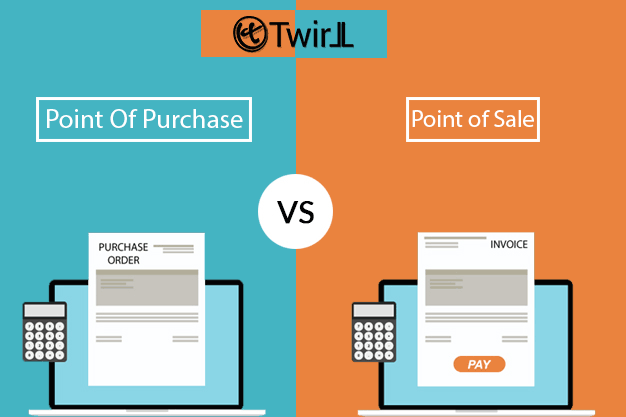
Point of Sale vs. Point of Purchase

In marketing, there are a huge number of terms that many people hear about but which few of them really understand. It is the case with Point of Sale (POS) and Point of Purchase (POP). They seem to be interchangeable and carry synonymous meanings. However, it is fundamentally wrong. Let’s figure out what these words exactly mean and how important POS and POP in sales are.
Meaning of POS System
The abbreviation POS refers to the place where the trade of goods and transactions occur. For example, in a physical store, it is a checkout counter with a cash register. POS systems are a complex set of software and hardware that make such transactions possible. They can be both physical and online, thanks to which merchants have the opportunity to make sales literally anywhere.
Together with POS software, you can connect portable devices, scanners, printers, cash drawers, and much more into a single system. Modern terminals allow business owners to offer a variety of payment methods to their buyers: from cash to bank cards and electronic wallets. At the same time, such solutions provide users with a much more extensive set of tools than just accepting payments. For example, ORTY provides inventory and management of employees, online ordering and food delivery, control over every table and all points in your network, and much more.
Here is a short outline of how a POS system works:
- Your customer chooses products or services.
- You scan a barcode using a special scanner or your device’s camera. It is also possible to indicate the exact weight of goods in physical stores. All this happens automatically when a person adds items to a cart on online platforms.
- The system analyzes the received data and calculates the total amount, taking into account, for example, VAT.
- The buyer makes a payment using one of the methods you provide. At this stage, they can use discount cards or coupons. Depending on how the client pays, authorization from the issuing bank may be required.
- After depositing the money (and receiving approval from the bank), a check, paper or electronic, is issued, and the transaction is considered completed. You either hand over the goods to the customer or proceed to arrange delivery.
While POS for retail may seem like a complex system at first glance, it actually works quite simply, and businesses benefit from using it in many ways.
What Is a Point of Purchase?
Despite the apparent similarity, POP is very different from POS. It is a broader concept since such points can be literally anywhere in a store. What does POP stand for in marketing? All showcases and display panels you see in stores are considered Point of Purchase displays. As a rule, they stand a little apart from the main shelves and are designed in such a way as to attract the most buyers’ attention. POP displays are placed in places with the highest traffic, for example, at the end of each aisle or right next to cash registers, so that buyers standing in lines are more likely to make impulsive purchases.
In the field of e-commerce, typical Point of Purchase examples are presented in the form of branded mobile applications or pop-up windows with unique offers on websites. Of course, their goals are the same:
- attracting visitors’ attention;
- raising the visibility of products;
- holding promotions and sales;
- increasing brand awareness, and so on.
Given that now almost all services have switched to an online format, such digital POP displays will become more common.
Main Difference Between POP and POS
You have become familiar with the Point of Sale system and Point of Purchase display definition differences. Let’s summarize the basic information so that you use marketing terms as correctly as possible:
- As a rule, Everything related to POP refers to the user experience. In a broad sense, it is the entire store in which goods are displayed.
- At the same time, POS is more used by business owners for sales, accepting payments, client service, and arranging internal processes.
- POP displays are directly related to marketing. They draw attention to a featured product or a new brand by offering customers discounts or the chance to purchase multiple-item packs.
- POS systems are multi-level complexes that combine apps and many different devices. They do not advertise goods and services but help to sell them. They also collect important sales and demand data and help shape promo campaigns. So they are related to marketing indirectly.
- While POPs can be put throughout a store, POS refers to a specific point where customers exchange money for products.
Now you know a POP display meaning, and you won’t confuse it with POS systems. It is incorrect to use them as interchangeable terms since they stand for completely different things. Besides, within one establishment, you can have both POS and POP.

Kaitlin Keefer
Kaitlin is an editor at Square where she covers everything from how small businesses can start, run, and grow, to how enterprise companies can use tools and data to become industry leaders.





